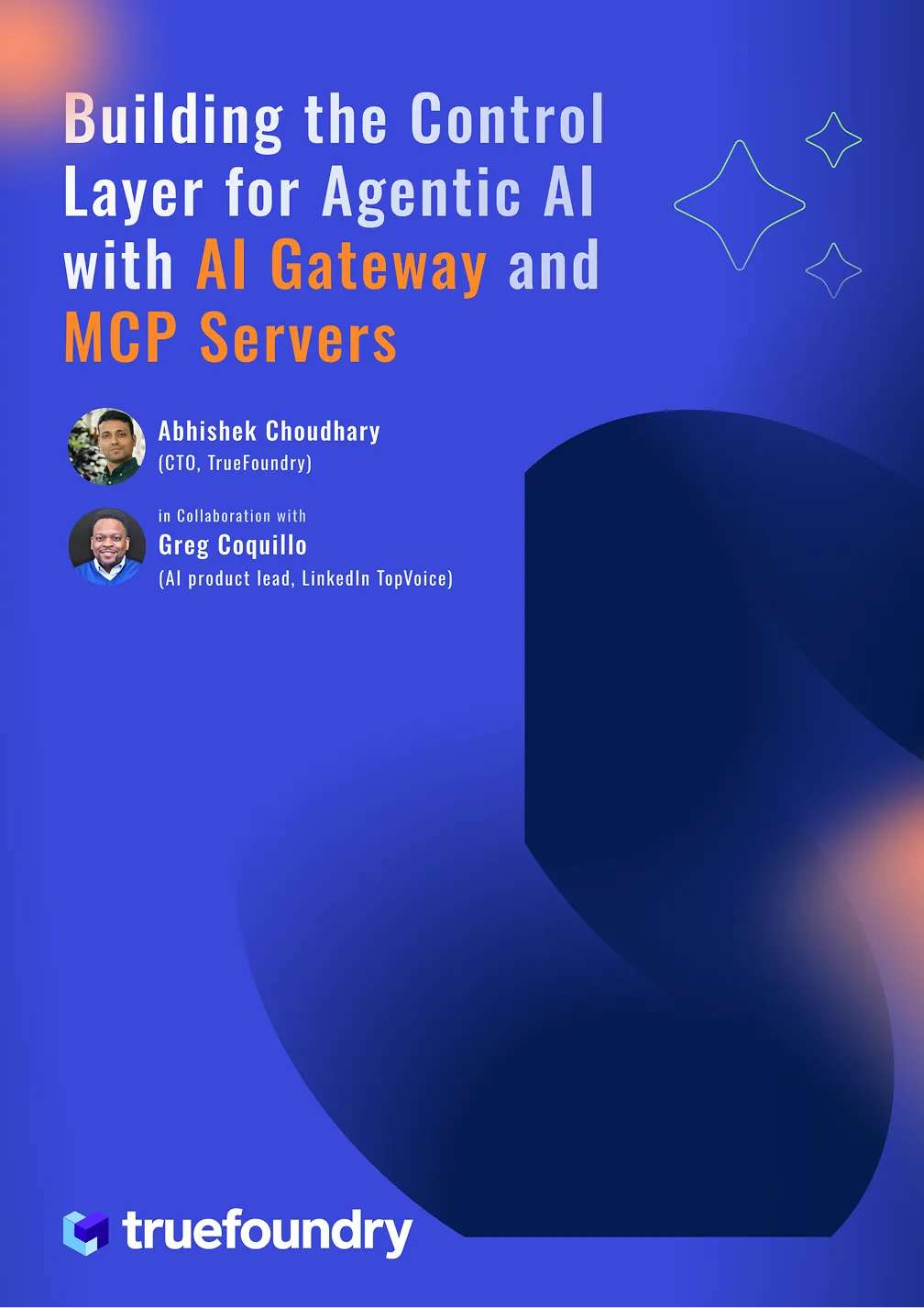Multi-Agent Systems Explained: Why the Future of AI Is Collaborative
Imagine a team of intelligent agents – AI programs that can reason, communicate, and act – all working together to solve a problem. This is the essence of a multi-agent system (MAS). A MAS is essentially a computerized system composed of multiple interacting intelligent agents, collaborating as a unified whole. Each agent operates autonomously with its own goals and knowledge, yet they coordinate their actions to achieve shared objectives. The result is a digital ecosystem of AI agents engaging in a sophisticated dance of interaction and cooperation, much like a flock of birds moving in unison or a team of experts tackling different aspects of a complex task. By dividing and conquering problems that would stump any single AI, MAS can handle challenges ranging from optimizing city traffic grids to automating intricate business workflows with unprecedented efficiency.
Why do multi-agent systems matter now more than ever?
Recent advances in AI – especially large language models (LLMs) – have given rise to “agentic” AI systems, where multiple AI agents plan, reason, and use tools collaboratively. Modern MAS leverage these advances to autonomously manage tasks that once required significant human coordination. However, designing a robust multi-agent solution is not trivial. It requires careful orchestration, communication protocols, and governance to ensure these agents work together reliably (and don’t descend into chaos!). This is where platforms like TrueFoundry come into play.
TrueFoundry provides an enterprise-grade AI platform that transforms multi-agent prototypes into production-ready solutions, handling the heavy lifting of security, scalability, and infrastructure so teams can focus on building intelligent agents. In the following sections, we’ll explore what MAS are, why they’re important, their key capabilities and architectures, and how TrueFoundry’s products empower organizations to leverage multi-agent systems effectively.
What Is a Multi‑Agent System (MAS)?
In simple terms, a multi-agent system is a collection of autonomous AI “agents” that work collectively to perform tasks or solve problems. Each agent in a MAS is an independent entity with its own set of knowledge and capabilities, but the power of MAS comes from their interaction and collaboration. By communicating and coordinating with each other, the agents can achieve goals that would be difficult or impossible for a single agent or monolithic system to accomplish. In other words, the group of agents as a whole is greater than the sum of its parts.
Agents in a MAS perceive their environment, make decisions, and take actions without constant human input. Their coordination leads to emergent behaviors that solve complex problems more efficiently. For example, in a smart factory, one agent may handle inventory, another schedules machines, and a third oversees quality control working in tandem to optimize production in real time.
Modern MAS often use LLM-powered agents that can reason, plan, invoke tools or APIs, and adapt their strategies dynamically. These are not static programs they’re intelligent assistants capable of evolving with the task.
In short, a MAS functions like a collaborative AI team: each agent has autonomy and specialization, but it’s their combined intelligence that makes the system powerful, scalable, and well-suited for dynamic, multi-step workflows.
Key Capabilities of MAS
Multi-agent systems function effectively because they blend autonomy, collaboration, and adaptability:
- Autonomy: Each agent operates independently, making decisions without centralized control. This self-governance allows the system to scale and remain resilient — even if individual agents fail.
- Local Perception: Agents work with partial views of the environment. While no agent sees the whole system, they share data to build a collective understanding — much like distributed teams in the real world.
- Decentralization: MAS avoid bottlenecks by distributing control. There’s no central “boss”; instead, agents coordinate through protocols or negotiation, enabling self-organization and fault tolerance.
- Communication & Coordination: Agents exchange messages or use shared memory to stay aligned. They may request help, synchronize actions, or negotiate resources using predefined protocols.
- Learning & Adaptation: Through reinforcement learning or experience sharing, agents can improve their strategies and adapt to changing environments leading to smarter, more efficient system behavior over time.
Together, these capabilities make MAS robust, scalable, and continuously improving ideal for solving dynamic, complex problems that static or single-agent systems struggle to handle.
Multi‑Agent Systems Architecture
Designing the architecture of a multi-agent system involves deciding how agents are organized and how they interact through the system’s infrastructure. Broadly, MAS can be structured in different architectural models, chiefly distinguished by how centralized or distributed the control and knowledge is:
- Centralized Architecture: In a centralized MAS, there is a central coordinating entity or knowledge base that all agents connect to. This central unit maintains the global state or master plan and oversees agent activities. The advantage is clear: communication is simplified (every agent can potentially query the central brain) and the system can enforce a consistent view of information. For example, a centralized multi-agent network might have a “master” agent that assigns tasks to worker agents and collects results. However, the downside is the reliance on this central node – if it fails or becomes a bottleneck, the entire system can halt. It also can become less adaptable if everything must funnel through a single point.
- Decentralized Architecture: In a decentralized (or distributed) MAS, no single agent has complete authority; instead, agents share information peer-to-peer or in local neighborhoods without a global orchestrator. This architecture offers robustness – if one agent fails, others can often continue since there’s no single point of failure. It also aligns well with scenarios where a global view is impractical due to scale or privacy (e.g. multiple organizations’ agents collaborating without sharing all data). The challenge here is ensuring coherent behavior emerges from many local interactions. Agents must use sophisticated communication and consensus strategies to coordinate effectively in the absence of a global controller. Decentralized MAS architectures often draw inspiration from nature (like ant colonies or bird flocks) to achieve organized behavior through distributed protocols.
Most real-world multi-agent systems fall somewhere on a spectrum between fully centralized and fully decentralized. Hybrid architectures are common – for instance, a hierarchical setup where some agents act as regional leaders coordinating sub-agents (a mix of centralization at local levels with decentralization globally). Another example is a blackboard architecture, where agents communicate indirectly by reading/writing to a common data space (the “blackboard”) – centralized data but decentralized decision-making.
No matter the architecture, a critical component is the middleware or communication framework that connects agents. Agent actions are typically mediated via an appropriate middleware, which provides the abstraction for messaging, resource sharing, and coordination. This middleware ensures that agents can discover each other, exchange messages in a standardized way, and perhaps register for particular events or services. It’s analogous to an operating system for the multi-agent network, handling the low-level details so the agents can focus on high-level reasoning.
TrueFoundry’s platform is designed to provide this kind of robust infrastructure for MAS, making it easier to implement any architecture. For example, TrueFoundry offers an AI Gateway that acts as a powerful orchestration layer for agent-based applications. The AI Gateway provides a centralized protocol endpoint for agents’ workflows – managing shared context, routing tool usage, and orchestrating multi-step reasoning across agents. This means that when your agents need to call external tools or maintain a collective memory, the gateway ensures it happens in a controlled, visible manner. All agent interactions through TrueFoundry’s gateway come with enterprise-grade observability and control, preventing the chaos that could arise in a free-for-all agent communication scenario.
In addition, TrueFoundry embraces standards to simplify agent integration. One such standard is the Model Context Protocol (MCP) – essentially a uniform interface for agents to access external data/tools. Think of MCP servers as the “USB-C of AI,” providing standardized ports through which agents can connect to enterprise systems (CRMs, databases, APIs) without custom integration code. TrueFoundry’s platform makes deploying and managing these MCP servers straightforward, so every agent has plug-and-play access to the tools it needs. The benefit is akin to using a universal adapter – agents call tools through a common protocol, and developers don’t have to rewire the system every time a new data source is added.
TrueFoundry’s architecture also includes an MCP & Agents Registry, which is essentially a catalog of all available tools and agents, complete with schema validation and access controls. This registry ensures that each agent knows what “skills” or APIs are at its disposal and how to invoke them properly. Coupled with TrueFoundry’s Prompt Lifecycle Management, developers can version and test the “prompts” or instructions that drive agent behaviors, ensuring consistent and auditable actions across the agent team.
Finally, TrueFoundry is designed to be framework-agnostic. Whether you design your MAS using LangChain, LangGraph, AutoGen, or any custom agent framework, TrueFoundry can deploy those agents as containerized, production-ready services. The platform handles hosting models (you can bring any LLM or ML model and serve it through TrueFoundry’s optimized backends) and ensures that agents built with different libraries can still work together under a unified control plane. In summary, TrueFoundry provides the technical backbone for multi-agent systems architecture – from communication and tool integration to scaling, security, and monitoring – so that architects of MAS can focus on the agent logic rather than reinventing infrastructure.
Multi-Agent Systems Structures
Beyond architecture, MAS can be categorized by how agents are socially and functionally organized. These structures define how responsibilities, communication, and authority are distributed:
- Hierarchical Structures: Agents are arranged in a layered, tree-like format. Higher-level agents delegate tasks to subordinates, creating a chain of command. This is ideal for naturally decomposed problems — such as emergency response systems — and enables efficient top-down control. TrueFoundry can support this by deploying supervisory agents with downstream workers, using tracing to visualize task delegation.
- Holonic Structures: Inspired by biological systems, holons are agents that function both as wholes and parts. A parent agent may encapsulate a group of sub-agents, forming a recursive system of sub-MAS. This is common in robotics and manufacturing. TrueFoundry’s modular deployment and namespace isolation make it easy to build and observe such holarchies.
- Coalition Structures: Temporary alliances form when agents need to collaborate on specific tasks. Once the objective is achieved, the coalition dissolves. These dynamic groupings are valuable in sensor networks or emergency diagnostics. TrueFoundry’s logging and access controls allow teams to track coalition behavior without centralized oversight.
- Team Structures: Unlike ad hoc coalitions, teams are persistent and tightly integrated. Agents operate under shared goals, often with role specialization (like a robot soccer team). Coordination is intense and continuous. TrueFoundry enables distributed team orchestration while enforcing observability and real-time monitoring.
Most MAS implementations blend these structures. Regardless of which you adopt, TrueFoundry’s platform provides flexible orchestration, real-time tracing, and governance primitives — ensuring agent coordination remains transparent, secure, and performant.
MAS vs Single-Agent Systems
A single-agent system is like a Swiss Army knife — one AI trying to do it all. In contrast, a multi-agent system (MAS) resembles a toolkit: multiple specialized tools working together. This fundamental shift enables several key advantages:
- Specialization: MAS agents can be domain-specific — one might handle language understanding, another visual data, a third numerical analysis. Specialization drives higher-quality, task-optimized performance. TrueFoundry supports this by letting teams deploy and manage diverse agents independently, each tuned to its own job.
- Parallelism: MAS allows concurrent processing. While a single agent must work sequentially, agents in a MAS divide and conquer, drastically reducing latency for multi-part workflows. TrueFoundry’s routing and orchestration engine lets you parallelize workloads across multiple LLMs or services easily.
- Resilience: If one agent fails, others continue — or step in to recover the task. This fault-tolerant design is crucial in real-world scenarios. TrueFoundry enforces observability and fallback logic at the gateway level, allowing graceful degradation and error handling.
- Scalability: MAS scales horizontally — you can simply add more agents or replicate roles. TrueFoundry simplifies this by managing agent deployment, scaling policies, and routing rules from a unified control plane.
- Modularity: MAS enables system updates at the agent level. Need a new capability? Add a new agent. Want to fix a bug? Just patch one module. TrueFoundry’s modular framework supports this composability by design, making your system easier to evolve.
Perhaps most importantly, MAS agents collaborate. They don’t just pass data — they negotiate, adapt, and strategize together. That makes them well-suited for distributed reasoning and dynamic task planning — far beyond what single-agent setups can achieve.
While MAS introduces design complexity (e.g. coordination, conflict resolution), TrueFoundry reduces that friction through tools like prompt versioning, traffic tracing, and guardrail enforcement. The result: more flexible, robust, and production-ready AI systems built on top of autonomous agent collaboration.
Benefits of Multi-Agent Systems
Multi-agent systems offer distinct advantages for solving large, dynamic, and distributed problems:
- Enhanced Problem Solving: By distributing intelligence, MAS can solve complex problems more efficiently than any single agent. Agents specialize and cross-validate one another, leading to faster, more accurate outcomes.
- Scalability and Flexibility: MAS architectures are inherently scalable. Add more agents to handle growing demand, or adapt roles as requirements shift. TrueFoundry makes this seamless with modular deployments and dynamic routing for agent workloads.
- Robustness and Fault Tolerance: With no central point of failure, MAS can self-heal. If one agent fails, others continue working or redistribute the load. TrueFoundry’s built-in observability and fallback routing make such fault tolerance production-ready.
- Specialization by Design: Each agent can be optimized for its domain — vision, language, planning, etc. This leads to performance gains and enables parallel development across teams. TrueFoundry supports isolated development and deployment of these agent modules.
- Efficiency and Performance: MAS can execute tasks in parallel, reducing latency and increasing throughput. In one real-world case, customers using TrueFoundry’s orchestration saw up to 80% better GPU utilization by distributing work across specialized agents.
In short, MAS provides a modular, resilient, and performance-driven architecture — and platforms like TrueFoundry offer the tools to operationalize them at scale.
Multi-Agent Systems Examples
MAS are already delivering real value across a wide range of industries:
- Smart Transportation: In smart cities, MAS coordinate traffic signals and autonomous vehicles to prevent congestion. Each signal or vehicle acts as an agent that adapts locally while cooperating globally.
- Healthcare and Epidemic Control: MAS help in monitoring disease outbreaks by integrating data from hospitals, social media, and epidemiological models. Agents may also assist in personalized treatment planning by representing different health data modalities.
- Supply Chain and Logistics: Each node in a supply chain — factories, warehouses, fleets — can operate as agents negotiating and adapting to delays or demand shifts. MAS enables just-in-time coordination across distributed systems.
- Defense and Cybersecurity: In simulations and real-time operations, agents represent tactical units or threat monitors. Drone swarms and anomaly detectors benefit from MAS structures to identify patterns and respond in concert.
- Enterprise Workflow Automation: Businesses are deploying MAS to manage customer service, internal analytics, and finance operations. On TrueFoundry, companies run LLM-based agents that automate multi-step tasks like sales research, invoice reconciliation, and support ticket resolution — each step handled by a specialized agent, working together like a digital team.
- AI Infrastructure Optimization: In internal deployments, companies like NVIDIA use MAS strategies to boost GPU utilization and task throughput. With TrueFoundry’s multi-agent orchestration, they observed significant cost and efficiency gains.
These use cases demonstrate that MAS isn’t theoretical — it’s practical, powerful, and increasingly essential in real-world AI. With support from platforms like TrueFoundry, organizations can deploy sophisticated agent ecosystems with observability, access control, and governance baked in — all while scaling flexibly and delivering enterprise-grade performance.
Conclusion
Multi-agent systems (MAS) represent a leap forward in AI architecture, enabling distributed, collaborative intelligence that far outperforms single-agent approaches in complex, dynamic environments. Wherever tasks can be parallelized, divided by expertise, or tackled in real time from smart cities to enterprise automation - MAS offers a flexible, scalable solution.
However, building and maintaining a MAS at scale comes with real challenges: coordinating agents, ensuring secure communication, maintaining observability, and aligning performance with production demands. This is where TrueFoundry excels. Its platform delivers the infrastructure necessary to deploy, govern, and scale multi-agent systems with confidence. From low-latency AI gateways and GPU orchestration to secure audit trails and access control, TrueFoundry abstracts away operational burden letting teams focus on outcomes, not infrastructure.
As AI continues to evolve, multi-agent collaboration will power intelligent ecosystems — where agents don’t just automate tasks, but cooperate to solve them intelligently. With enterprise-ready platforms like TrueFoundry, organizations now have the tools to bring MAS out of the lab and into the real world responsibly, efficiently, and at scale. The future of AI is not singular, it’s collective. And MAS, backed by the right infrastructure, are the foundation of that future.
Built for Speed: ~10ms Latency, Even Under Load
Blazingly fast way to build, track and deploy your models!
- Handles 350+ RPS on just 1 vCPU — no tuning needed
- Production-ready with full enterprise support
TrueFoundry AI Gateway delivers ~3–4 ms latency, handles 350+ RPS on 1 vCPU, scales horizontally with ease, and is production-ready, while LiteLLM suffers from high latency, struggles beyond moderate RPS, lacks built-in scaling, and is best for light or prototype workloads.



















